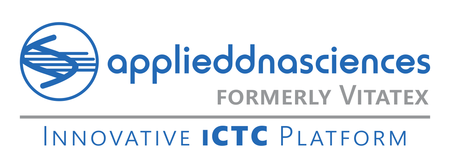Vita-Assay™

Vitatex’s functional cell separation technology is based on preferential adhesion of rare cells in blood of tissue origin to a tissue microenvironment mimic, called Cell Adhesion Matrix (CAM*). CAM enriches viable CTCs in blood, one-million-fold, and identifies invasive circulating tumor cells (iCTCs) with their capability of ingesting CAM (CAM+). The bottom of each well of the Vita-Assay™ plate is coated with a scaffold layer that is comprised of plain or fluorescently labeled CAM. The inner surface of the Vita-Assay™ plate is coated with a scaffold layer that is comprised of plain CAM. Circulating tumor cells (CTCs: defined using expression of the epithelial cell surface markers EPI, EPCAM and CD24; iCTCs: defined using expression of the tumor progenitor (TP) markers, CD44 and seprase) in blood, adhere to the CAM surface due to their high avidity for the extracellular matrix (ECM). Since the proclivity to degrade and ingest CAM (CAM+) is one of the hallmarks of invasive and metastatic cells, CAM+ cells represent a unique way to identify invasive CTCs (iCTCs) that express the stem cell marker CD44 and the invasiveness marker seprase (Chen et al., 2006; Chen, 2003; Chen and Kelly, 2003; Fan et al., 2009; Friedlander et al., 2014; Ghersi et al., 2006; Goldstein et al., 1997; Goscinski et al., 2008; Henry et al., 2007; Iwasa et al., 2005; Kennedy et al., 2009; Kennedy and Chen, 2007; Lu et al., 2010; Monsky et al., 1994; Okada et al., 2003; Paris et al., 2009; Pearl et al., 2014; Pearl et al., 2015; Pineiro-Sanchez et al., 1997; Tulley and Chen, 2014; Zhang et al., 2007). The CAM platform has allowed sensitive multiplex flow cytometric detection of iCTCs from patients with cancer of the breast, ovary, prostate, lung, colorectum, pancreas and other non-hematopoietic cancers. CAM enrichment works similarly well for the separation of invasive tumor cells in ascites and pleural fluid.
To capture rare cells from whole blood, anti-coagulated venous blood is subjected to red cell lysis. Rare cells, such as CTCs, hematopoietic immune cells, and circulating endothelial cells (CECs) are thus concentrated 1,000-fold from the nuclear cell fraction. Rare cells from the nuclear cell fraction are enriched by their avidity to CAM scaffolds further through an overnight, 37oC incubation in the Vita-Assay™ device, and subsequently enriched 1 million-fold from original whole blood. Importantly, metastatic tumor cells specifically ingest proteins in the CAM scaffolds and the invasive tumor cells become labeled when CAM is fluorescently conjugated. Fluorescence of CAM+ tumor cells, iCTCs, is readily detectable when cells are incubated in Vita-Assay™ plates for >12 hours. Once washed, attached CAM-avid tumor and immune cells can be either directly analyzed using microscopy or released from CAM scaffolds by enzymatic digestion for characterization of the enriched cells using multi-parameter flow cytometry.

Workflow for Blood Collection, CAM Cell Enrichment and Flow Cytometry Enumeration, as well as Culture of CTCs in Minimum Volume of a Patient’s Blood (per well of a Vita-Assay™ plate).

Workflow for CTC drug resistance (CDR) testing ex vivo (using AN6W).
